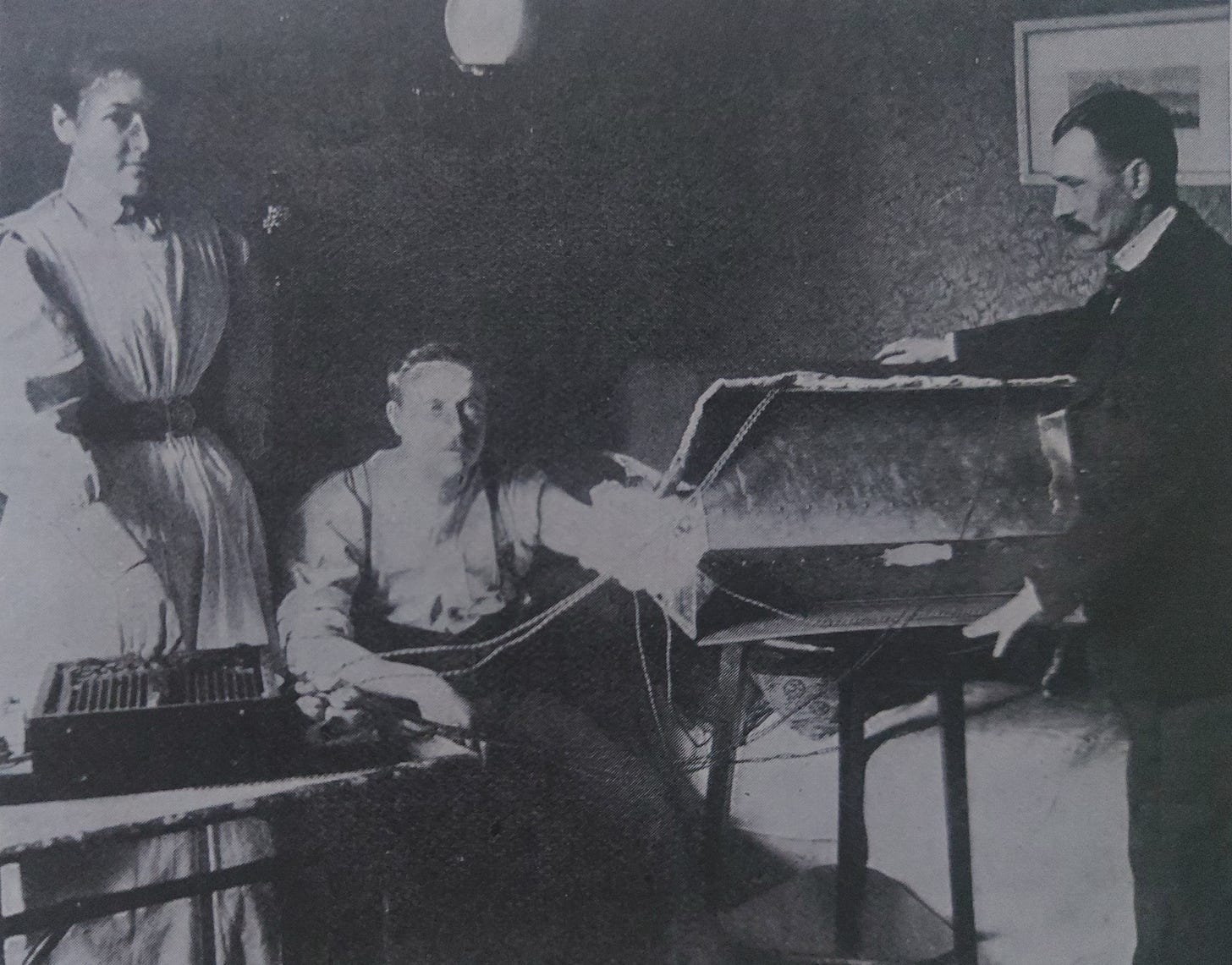When City Fell Foul of Edwardian Financial Fair Play (Pt 3)
Three: The Hospital For Footballers
In July 1902, following a two-year campaign in his newspapers, Manchester press baron Edward Hulton became the new City chairman. Manager Sam Ormerod, whom Hulton’s Athletic News had blamed for the club’s relegation to the Second Division three months earlier, immediately resigned, and was replaced by Tom Maley, a founding player of Celtic FC.
The appointment was a surprise to many in Glasgow. Maley had been a Celtic director since 1897 and his brother, Willie, was the club’s manager. But key to the move was John Allison, a Hulton ally who had joined the City board in June. Allison, who was also a Celtic shareholder, had travelled to Glasgow to secure Maley’s move to Manchester.
And one of the reasons Maley agreed was that City could offer him something that no other club in football could—unique access to a clinic that Allison had founded that specialised in sports injury and physiotherapy. Dubbed “the hospital for footballers”, it was located a few hundred yards from City’s Hyde Road ground.
Allison had intitially established a hydropathic clinic in Higher Ardwick in 1872, when he was was just 22-years-old. After travelling to Philadelphia to study massage under renowned physician Silas Weir Mitchell (who discovered the pain disorders causalgia and erythromelalgia, and pioneered rest cure), and then to Sweden to study their massage techniques, he returned to Ardwick to open a new establishment on Hyde Road—Matlock House—that offered various forms of pain relief with water treatment.
In January 1895 he was left a large legacy in the will of a former patient, Bolton iron magnate and Tory MP, John Hick, ‘to be devoted to the purpose of extending his system of massage’. Matlock House was expanded, and became specialists in the treatment of muscular and limb injuries. According to the March 1899 edition of Windsor Magazine,
‘For the first years of its existence it was resorted to mainly by hunting men who had met with accidents. However, one or two footballers gradually found their way into the famous establishment. Then Mr J. J. Bentley, the president of the Football League and editor of Athletic News, interested himself in the matter, with the result that Matlock House soon became the recognised hospital for maimed footballers.’

By 1899 it had ‘housed and healed nearly every well-known footballer who has had the bad luck to be maimed or injured’, with a result that
‘Mr Allison probably knows more about professional football players than any man living. He has had most of them in his care at one time or other, and, as he says, you can learn more of the true inwardness of a man’s character in a week at Matlock House than you would gather in a year elsewhere.’
Noting that ‘nine out of every ten cases’ are injuries to the knee and ankle, the article detailed Allison’s methods.
‘If no surgical aid is required, Mr Allison will at once proceed to mete out his own special treatment. The first step in this treatment is to fit a machine to the patient’s leg which will keep the knee in constant movement… The damaged footballer is next subjected to a course of what is called radiant heat treatment’, which ‘mainly consists in applying a tremendous heat by means of electricity, and localised it upon the injured part of the limb. It is essentially a dry heat, and under its process a temperature of no less than 500 degrees can be endured without discomfort.’ Vapor baths, rowing machines and massage with electric vibrators were also part of the treatment.
Celtic had been pioneers—and most probably the inventors—of a passing game that emphasised skill as well as strength. It was known to their fans as the “Celtic Way”, and on Easter Sunday 1891 City had experienced it for the first time in a friendly at Hyde Road. Celtic won 7-2, with the Athletic News reporting that the visitors ‘showed their superiority in every part of the game, their passing being beyond description’.
Key to this style of play was fitness and the treatment of injury. And thanks to Allison, Maley was now ready to take this passing game to new levels.
Allison’s clinic gave City a near monopoly of medical information, as well as a unique database of players’ wages and personal habits. Hulton’s control of most of Britain’s sporting press meant City also had exclusive access to the largest information-gathering network in sport. Plus City’s new chairman was prepared to spend a few bob.
In 1901 Black & White magazine had lamented Manchester’s failure to produce a “first-class” side. Both Liverpool and Everton had won a League title by this point, while Aston Villa had won five, and Sunderland four. Both Nottingham clubs had won the FA Cup, as had Sheffield’s two clubs. Even London had got in on the act, after Spurs lifted the Cup in 1901.
But now it was Manchester’s turn to show the world how football should be played.
You can subscribe for free, below, and have the latest articles sent straight to your inbox.



Very interesting stuff , quite revolutionary treatment at the time no doubt for football injuries.really enjoying your articles